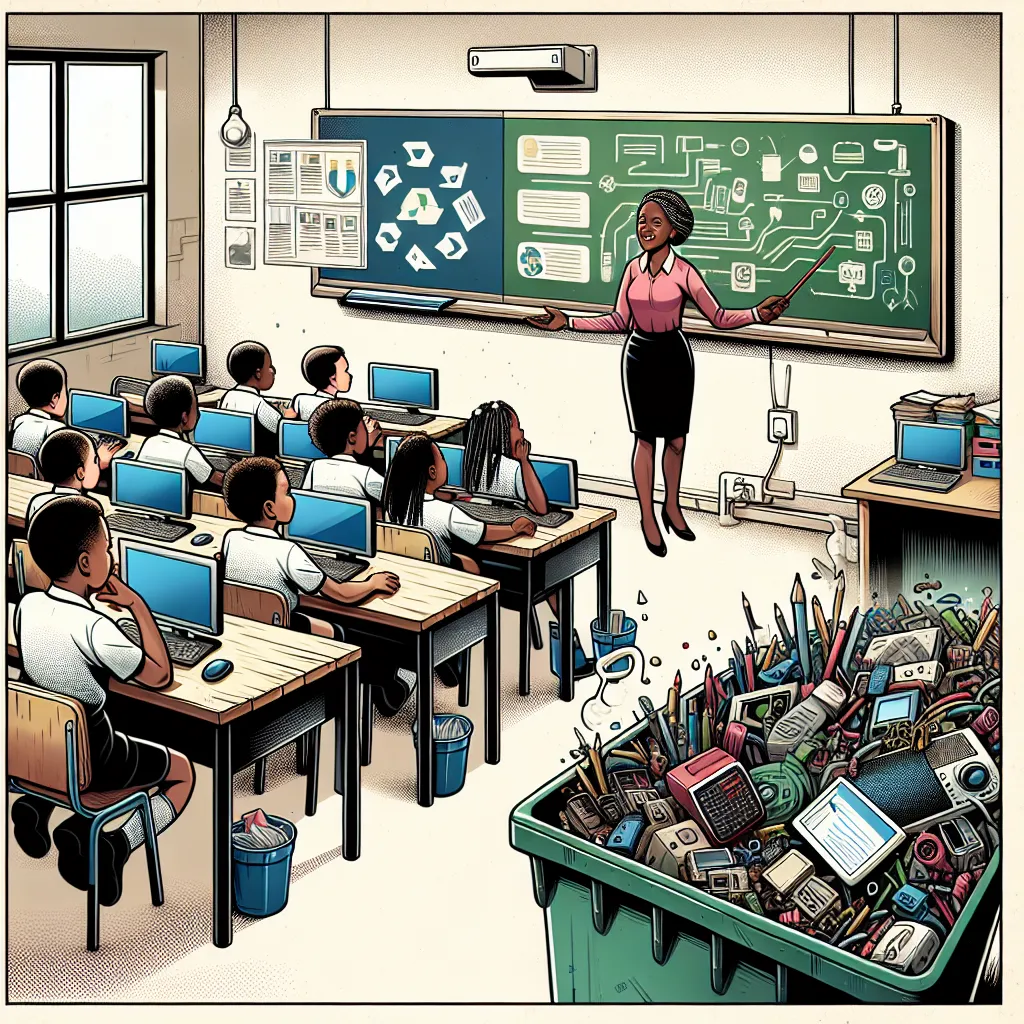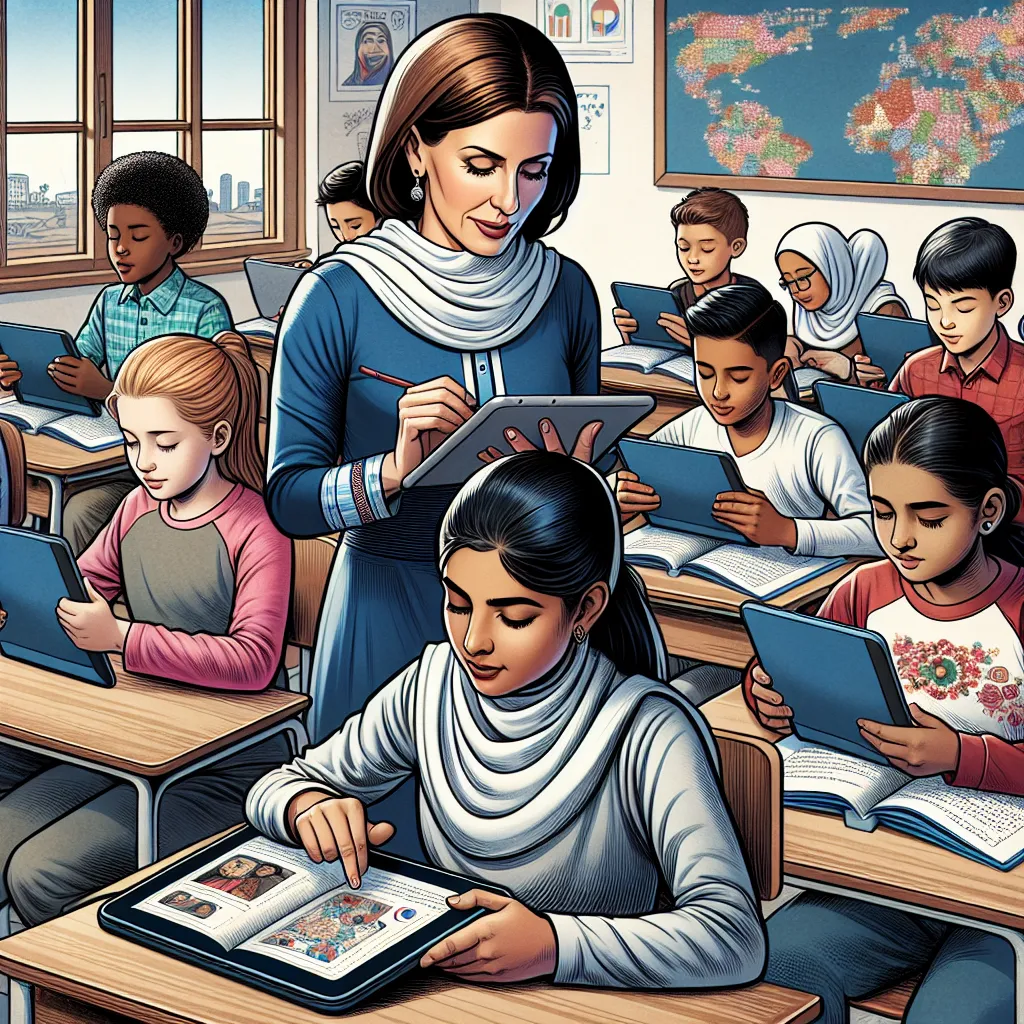Ask AI on The Internet
Question: Please answer the follow questions and reference sources at the end. Part 1: Understanding ICT Integration in South African Schools (40 marks) 1. Define ICT (Information and Communication Technologies) and explain why its integration is crucial in the context of South African education. [10] 2. Identify and elaborate on three significant challenges faced by South African schools when integrating ICTs into their educational framework. Provide specific examples if available. [15] 3. Discuss the digital divide issue in South African schools. How does it impact students' access to ICT resources and their learning experiences? Propose possible solutions to bridge this divide. [15] Part 2: Strategies to Support ICT Integration in Classroom Activities (40 marks) 4. Describe the SAMR (Substitution, Augmentation, Modification, Redefinition) model for technology integration. How can South African educators apply this model to enhance classroom activities with ICTs? [10] 5. Explain three innovative ways in which teachers can effectively use ICTs to engage students and facilitate active learning in the classroom. Provide examples for each. [10] 6. Discuss the importance of continuous professional development for educators concerning ICT integration. Outline specific training and support mechanisms that can empower teachers to use ICTs effectively. [10] 7. Explore the role of partnerships with local businesses or organizations in aiding South African schools with ICT resources and support. Provide examples of successful collaborations. [10] Part 3: Reflection and Future Action (20 marks) 8. On your personal experiences or observations regarding ICT integration in education. Share one specific example of successful ICT use in a classroom or educational setting and analyze why it was successful. [10] 9. As a prospective educator or concerned individual, propose three actionable steps that you can take to contribute to the integration of ICTs in South African schools. Explain how these actions could positively impact the educational landscape. [10]
### Part 1: Understanding ICT Integration in South African Schools (40 marks) #### 1. Definition and Importance of ICT Integration [10 marks] **ICT (Information and Communication Technologies)** refers to various tools and applications used to communicate, create, disseminate, store, and manage information. These technologies include computers, the internet, broadcast technologies (radio and television), and telephony. **Importance of ICT Integration in South African Education:** - **Enhances Learning Experience:** ICT tools can create interactive and engaging learning environments, making complex subjects easier to understand. - **Access to Information:** Broadens access to vast educational resources and up-to-date information, promoting self-directed learning. - **Promotion of Digital Literacy:** Essential for students to thrive in a modern economy reliant on technological fluency. - **Bridging Educational Gaps:** Facilitates equal learning opportunities, especially in remote or under-resourced areas. - **Prepares Students for Workforce:** Equips students with essential skills for employability in the digital age. #### 2. Challenges of ICT Integration [15 marks] **Significant Challenges:** - **Infrastructure and Resources:** - **Example:** Inadequate internet connectivity and insufficient digital devices like computers or tablets. - **Teacher Training and Preparedness:** - Many educators lack the necessary skills and confidence to effectively integrate ICT into their teaching methods. - **Socio-Economic Disparities:** - **Example:** Schools in affluent areas may have better ICT resources and support compared to those in disadvantaged communities. #### 3. The Digital Divide and Solutions [15 marks] **Digital Divide Impact:** - **Access Inequality:** Students in remote or low-income areas may lack access to necessary devices and high-speed internet. - **Learning Disparities:** Limited access results in uneven learning experiences and increases educational inequalities. **Proposed Solutions:** - **Government and Policy Interventions:** Policies aimed at subsidizing internet connectivity and providing discounted digital devices. - **Community-Based Programs:** Initiatives to set up digital libraries or community centers equipped with ICT resources. - **Public-Private Partnerships:** Collaborations to fund ICT projects in under-resourced schools. ### Part 2: Strategies to Support ICT Integration in Classroom Activities (40 marks) #### 4. SAMR Model [10 marks] **Description:** The SAMR model provides a framework for integrating technology into education, categorized into four levels: - **Substitution:** Technology substitutes traditional methods with no functional change. - **Augmentation:** Technology acts as a direct tool substitute with functional improvements. - **Modification:** Redesigns significant task portions using technology. - **Redefinition:** Technology allows for creation of new, previously inconceivable tasks. **Application in South Africa:** - **Substitution Example:** Using e-textbooks instead of printed ones. - **Augmentation Example:** Incorporating multimedia elements into digital presentations. - **Modification Example:** Utilizing interactive platforms like Google Classroom for real-time student collaboration. - **Redefinition Example:** Students creating digital portfolios or multimedia projects that can be shared globally. #### 5. Innovative ICT Use in Classrooms [10 marks] **Effective Methods:** - **Gamification:** Incorporating game elements to make learning fun and engaging. E.g., using educational games to teach math concepts. - **Flipped Classroom:** Students access lecture materials online at home and engage in hands-on activities in class. E.g., using video lectures for homework and problem-solving sessions in class. - **Collaborative Learning:** Using online tools for group projects and discussions. E.g., collaborating on projects using platforms like Google Docs. #### 6. Importance of Continuous Professional Development [10 marks] **Necessity:** - **Keeps Teachers Updated:** Staying updated with the latest ICT tools and teaching methodologies. - **Boosts Confidence:** Increases teachers' confidence in using technology. - **Improves Teaching Quality:** Enhances the overall quality of education. **Training and Support Mechanisms:** - **Workshops and Seminars:** Regular training sessions on new ICT tools. - **Online Courses:** Providing accessible online courses and certifications. - **Peer Learning Groups:** Forming ICT-focused professional learning communities. #### 7. Partnerships with Local Businesses [10 marks] **Role and Examples:** - **Resource Donations:** Businesses can donate hardware and software to schools. - **Skill Training:** Offering ICT skill training programs for students and teachers. - **Example:** Microsoft’s “Shape the Future” initiative, providing affordable devices and learning programs. ### Part 3: Reflection and Future Action (20 marks) #### 8. Personal Experience [10 marks] **Example:** - A rural school implemented a project-based learning approach using tablets donated by a local NGO. The students used educational apps to create digital stories as part of their language learning curriculum. - **Success Factors:** - **Student Engagement:** Higher motivation and participatory learning. - **Skill Development:** Enhanced digital literacy and creativity. #### 9. Actionable Steps [10 marks] **Proposed Actions:** - **Advocate for ICT Funding:** Lobby for increased government and private sector funding earmarked for ICT in education. - **Volunteer for Training Programs:** Contribute to or organize teacher training workshops focusing on ICT usage. - **Promote Awareness:** Use social media and local networks to raise awareness about the importance of ICT in education and its benefits. ### References: - World Bank. (2020). South Africa Digital Economy Diagnostic. - Department of Basic Education, South Africa. (2018). National Guidelines for School ICT Deployment and Use. - Microsoft. (n.d.). Shape the Future Initiative.
Think your answer is better than the AI's? Post it below.
Other Most Relevant Posts:
 1. ICT Integration in South African Schools
2. Challenges in ICT Integration
3. Bridging the Digital Divide in South African Schools
4. SAMR Model in South African Schools
5. Innovative ICT Use i
1. ICT Integration in South African Schools
2. Challenges in ICT Integration
3. Bridging the Digital Divide in South African Schools
4. SAMR Model in South African Schools
5. Innovative ICT Use i
Question Tags
If you want your question answered by an AI, click here.






Post your own comment: